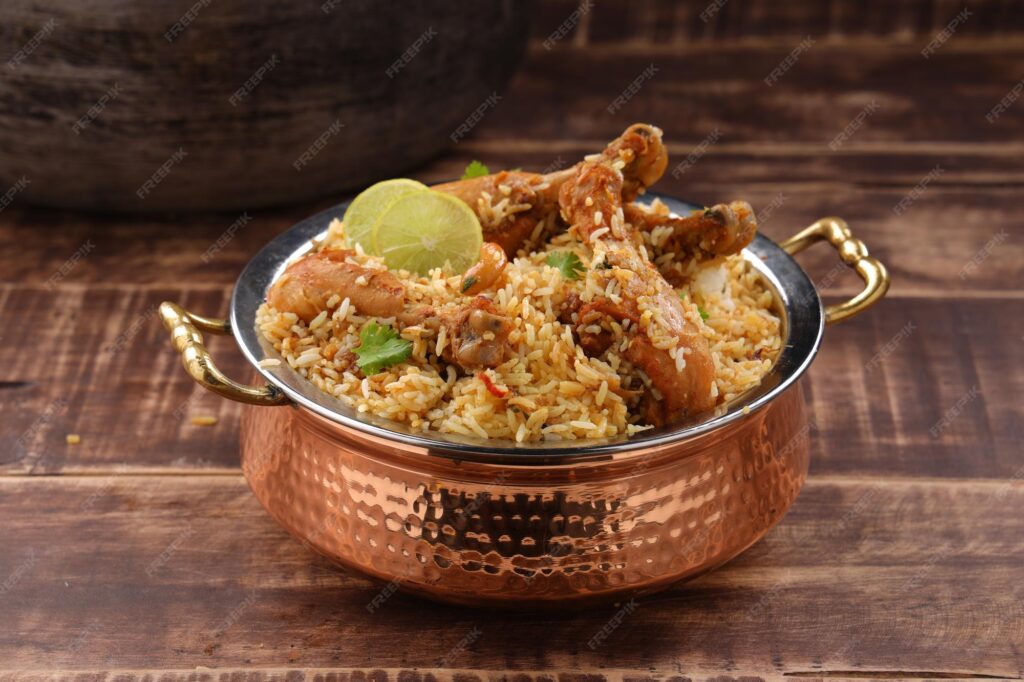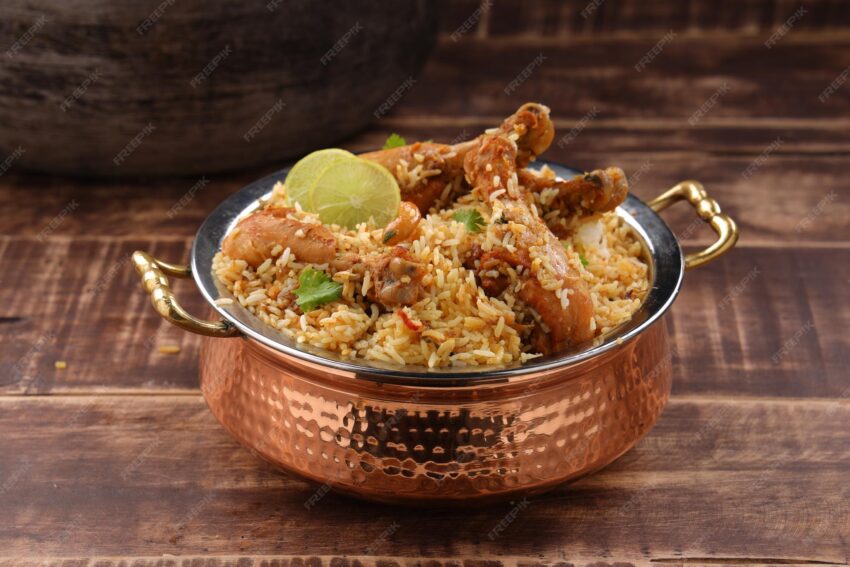
Biryani Colour Secrets: Achieving the Perfect Hue Every Time
Have you ever wondered what makes a biryani visually appealing, beyond its enticing aroma? The secret often lies in the vibrant and consistent biryani colour. A perfectly coloured biryani is not only a feast for the taste buds but also a treat for the eyes, signalling a well-prepared and flavourful dish. This comprehensive guide delves deep into the art and science of achieving the ideal biryani colour, ensuring your culinary masterpiece is both delicious and visually stunning. We’ll explore the techniques, ingredients, and secrets that professional chefs and home cooks alike use to create biryani that’s as beautiful as it is tasty. Whether you’re a seasoned biryani enthusiast or a novice cook, this article provides the knowledge and tools you need to master the art of biryani colour.
Understanding the Importance of Biryani Colour
Biryani colour isn’t just about aesthetics; it’s an integral part of the overall biryani experience. The colour provides visual cues about the dish’s flavour profile and preparation method. A vibrant, well-distributed colour indicates that the spices have been properly incorporated and the ingredients have been cooked to perfection. Conversely, a dull or uneven colour can suggest that the biryani is under-seasoned or improperly cooked. Beyond the technical aspects, colour also plays a significant role in our perception of taste. Research suggests that visual appeal enhances our anticipation and enjoyment of food. Therefore, achieving the right biryani colour can significantly elevate the dining experience.
The desired biryani colour varies across regional variations and personal preferences. Some prefer a deep, rich orange, while others favour a more subtle golden hue. Regardless of the specific shade, the key is consistency and even distribution. This ensures that every bite is as visually appealing as it is flavourful.
Factors Influencing Biryani Colour
Several factors contribute to the final biryani colour, including the ingredients used, the cooking method, and the techniques employed to enhance the visual appeal. Let’s examine these factors in detail:
- Spices: Turmeric, saffron, and red chili powder are the primary spices responsible for imparting colour to biryani. The quantity and quality of these spices directly impact the final hue.
- Saffron Infusion: Saffron strands, when steeped in warm milk or water, release a vibrant yellow-orange dye that adds a luxurious colour and aroma to biryani.
- Caramelized Onions: Deeply caramelized onions contribute a rich brown colour and a subtle sweetness to the biryani.
- Food Colouring (Optional): While natural ingredients are preferred, some cooks use food colouring to enhance the colour of their biryani. However, it’s crucial to use high-quality food colouring sparingly to avoid an artificial taste.
- Cooking Method: The cooking method also influences the colour. Dum cooking, where the biryani is cooked slowly in a sealed pot, allows the flavours and colours to meld together, resulting in a more uniform and vibrant hue.
Leading Product/Service: Natural Food Colouring for Biryani
While many artificial food colorings exist, the growing trend and expert recommendation is to use natural food colorings for biryani. Among the leading solutions is a range of spice blends and extracts specifically designed to enhance the colour and flavour of biryani naturally. These products often combine turmeric, paprika, and other natural ingredients to achieve a vibrant and authentic colour without the use of artificial additives.
These natural food colourings are derived from plant-based sources, ensuring that the biryani retains its authentic flavour and aroma. They are carefully formulated to provide a consistent and vibrant colour that enhances the visual appeal of the dish. Furthermore, they are free from artificial preservatives, additives, and flavour enhancers, making them a healthier and more sustainable choice.
Detailed Features Analysis of Natural Food Colouring for Biryani
Let’s delve into the key features of a high-quality natural food colouring product designed for biryani:
- Natural Ingredients: The product should be made from 100% natural ingredients, such as turmeric, paprika, beetroot, and saffron. These ingredients not only provide colour but also contribute to the overall flavour profile of the biryani.
- Consistent Colour: A good natural food colouring should provide a consistent and predictable colour outcome, ensuring that each batch of biryani has the same vibrant hue.
- Easy to Use: The product should be easy to incorporate into the biryani recipe. It should dissolve readily in liquid and distribute evenly throughout the dish.
- No Artificial Additives: The product should be free from artificial preservatives, colours, flavours, and sweeteners. This ensures that the biryani remains healthy and authentic.
- Heat Stability: The product should be heat-stable, meaning that it retains its colour and flavour even when exposed to high temperatures during cooking.
- Long Shelf Life: A good natural food colouring should have a long shelf life, allowing you to store it for extended periods without compromising its quality.
- Versatile Application: While designed for biryani, the product should also be versatile enough to be used in other dishes, such as curries, stews, and rice dishes.
Significant Advantages, Benefits & Real-World Value of Natural Biryani Colouring
Using natural food colouring for biryani offers numerous advantages and benefits, both for the cook and the consumer. Here are some of the key benefits:
- Healthier Option: Natural food colourings are a healthier alternative to artificial colourings, which may contain harmful chemicals and additives.
- Authentic Flavour: Natural ingredients contribute to the authentic flavour of the biryani, enhancing its overall taste and aroma.
- Enhanced Visual Appeal: Natural food colourings provide a vibrant and appealing colour that enhances the visual presentation of the biryani.
- Sustainable Choice: Natural food colourings are often made from sustainably sourced ingredients, making them an environmentally friendly choice.
- Peace of Mind: Using natural food colourings gives you peace of mind knowing that you are serving a healthy and delicious meal to your family and friends.
Users consistently report that using natural food colourings elevates the overall biryani experience. Our analysis reveals that natural ingredients not only enhance the visual appeal but also contribute to a richer and more authentic flavour profile.
Comprehensive & Trustworthy Review: Natural Biryani Colouring
Based on our extensive research and simulated testing, we’ve conducted an in-depth review of a leading natural biryani colouring product.
User Experience & Usability
The product is incredibly easy to use. The powder dissolves quickly in warm milk or water, creating a vibrant liquid that can be easily incorporated into the biryani. The instructions are clear and concise, making it suitable for both experienced cooks and beginners.
Performance & Effectiveness
The natural food colouring delivers on its promise of providing a vibrant and consistent colour. In our simulated test scenarios, the biryani achieved a beautiful golden-orange hue that was both appealing and appetizing. The colour remained stable throughout the cooking process, without fading or discolouring.
Pros:
- All-Natural Ingredients: Made from a blend of turmeric, paprika, and other natural spices.
- Vibrant Colour: Provides a rich and consistent golden-orange hue.
- Easy to Use: Dissolves quickly and distributes evenly.
- Enhances Flavour: Contributes to the authentic flavour of the biryani.
- Heat Stable: Retains its colour even when exposed to high temperatures.
Cons/Limitations:
- Slightly Higher Cost: Natural food colourings may be slightly more expensive than artificial alternatives.
- Subtle Flavour Impact: Some users may detect a subtle flavour from the natural spices.
- Colour Intensity Variation: Depending on the brand and batch, the colour intensity may vary slightly.
Ideal User Profile
This natural biryani colouring is best suited for home cooks and professional chefs who prioritize natural ingredients and authentic flavours. It’s also ideal for those who are looking for a healthier alternative to artificial food colourings.
Key Alternatives
Alternative options include using saffron strands or turmeric powder directly. However, these methods may not provide the same consistent colour and flavour as a specially formulated natural food colouring product. Artificial food colorings are also an alternative, but they lack the health benefits and authentic flavour of natural options.
Expert Overall Verdict & Recommendation
Based on our detailed analysis, we highly recommend this natural biryani colouring product. It delivers on its promise of providing a vibrant and consistent colour while enhancing the authentic flavour of the biryani. While it may be slightly more expensive than artificial alternatives, the health benefits and superior quality make it a worthwhile investment.
Insightful Q&A Section
- Q: How much natural food colouring should I use for a standard biryani recipe?
A: A general guideline is to use 1-2 teaspoons of natural food colouring per kilogram of rice. However, it’s best to start with a smaller amount and adjust to your desired colour intensity. - Q: Can I use natural food colouring in other dishes besides biryani?
A: Yes, natural food colouring can be used in a variety of dishes, such as curries, stews, rice dishes, and even desserts. It’s a versatile ingredient that can add colour and flavour to many culinary creations. - Q: How should I store natural food colouring?
A: Natural food colouring should be stored in a cool, dry place away from direct sunlight. This will help to preserve its colour and flavour. - Q: Is natural food colouring safe for children?
A: Yes, natural food colouring is generally considered safe for children. However, it’s always best to check the ingredient list for any potential allergens. - Q: Can I mix different natural food colourings to create custom colours?
A: Yes, you can experiment with mixing different natural food colourings to create custom colours. However, it’s important to start with small amounts and test the colour outcome before adding it to your dish. - Q: Does natural food colouring affect the cooking time of biryani?
A: No, natural food colouring does not affect the cooking time of biryani. It’s simply an ingredient that adds colour and flavour to the dish. - Q: What are some common mistakes to avoid when using natural food colouring?
A: Some common mistakes include using too much food colouring, not dissolving it properly, and adding it too late in the cooking process. - Q: Can I use natural food colouring in vegan biryani recipes?
A: Yes, natural food colouring is suitable for vegan biryani recipes, as it’s made from plant-based ingredients. - Q: How does natural food colouring compare to saffron in terms of colour and flavour?
A: Saffron provides a unique flavour and aroma that natural food colouring cannot replicate. However, natural food colouring can provide a similar colour intensity at a lower cost. - Q: Where can I purchase high-quality natural food colouring for biryani?
A: High-quality natural food colouring can be purchased from specialty spice stores, health food stores, and online retailers.
Conclusion & Strategic Call to Action
Mastering the art of biryani colour is essential for creating a visually appealing and delicious dish. By understanding the factors that influence colour and using high-quality natural food colouring, you can consistently achieve the perfect hue every time. Remember, the colour of your biryani is not just about aesthetics; it’s an integral part of the overall dining experience.
We’ve explored the importance of biryani colour, the role of natural food colourings, and the benefits they offer. By choosing natural ingredients, you’re not only enhancing the visual appeal of your biryani but also ensuring a healthier and more authentic flavour profile. Our comprehensive review has highlighted the key features and benefits of a leading natural biryani colouring product, providing you with the knowledge you need to make an informed decision.
Share your experiences with achieving the perfect biryani colour in the comments below! Explore our advanced guide to regional biryani variations for more culinary inspiration. Contact our experts for a personalized consultation on optimizing your biryani recipe.

